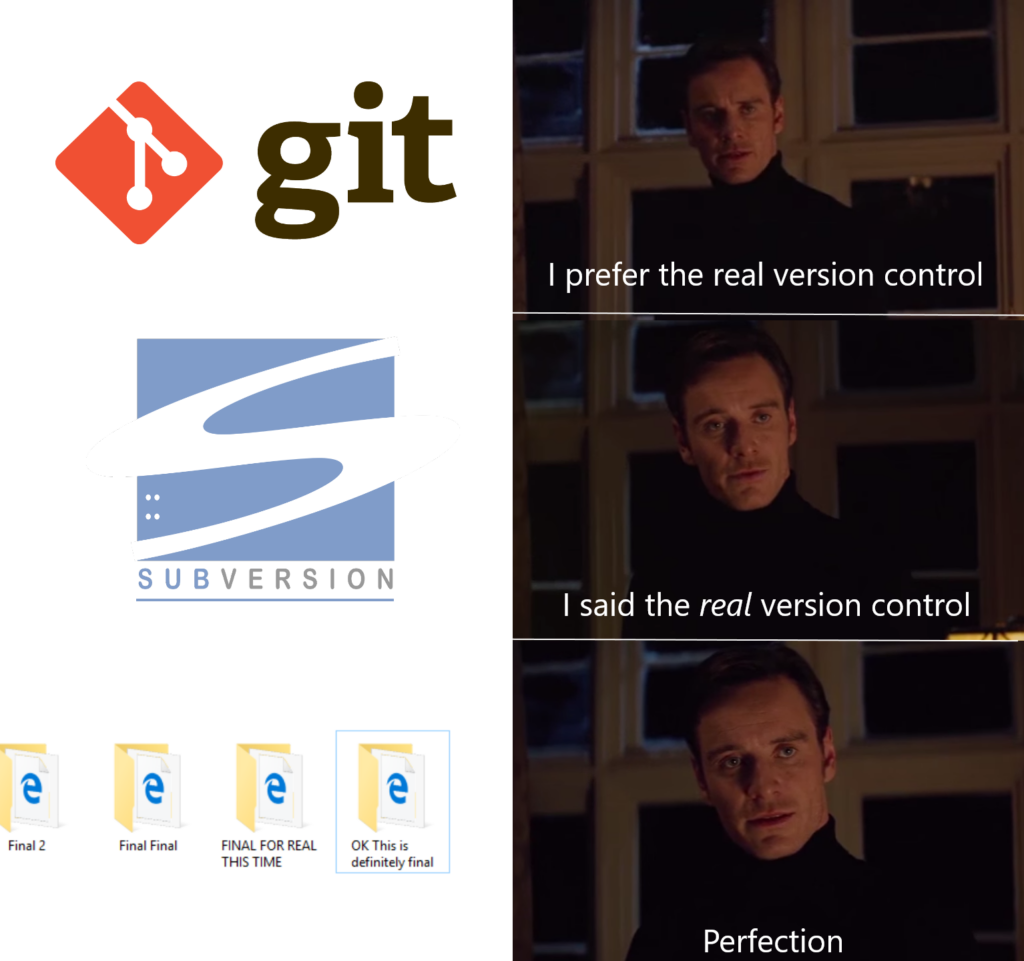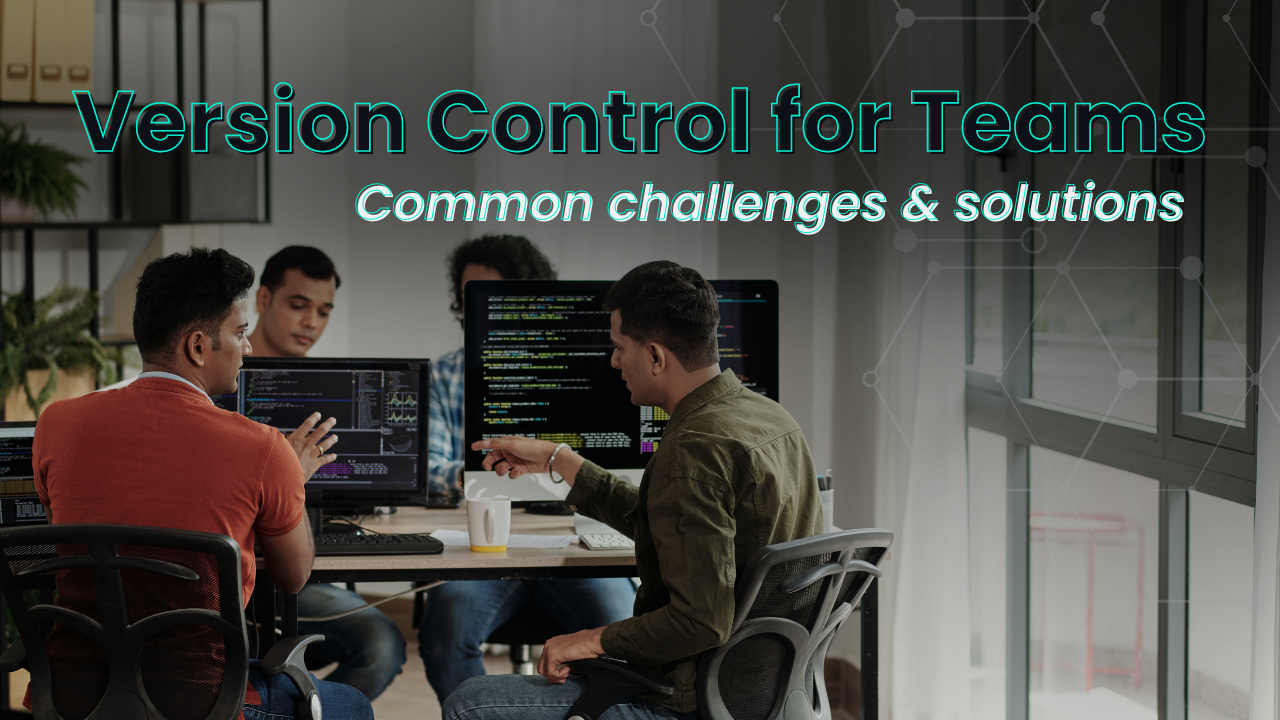The promise of version control for teams is enticing: better collaboration, more organized workflows, and easier tracking of changes – just to name a few. But, as with anything else, it’s not a perfect fix. Merge conflicts, inconsistent coding practices, and communication issues are just a few of the all-too-common hurdles that teams can face on their version control journey.
Despite these obstacles, version control is one of the most effective ways to maintain code integrity and track project history, enabling multiple developers to work simultaneously on different features without stepping on each other’s toes.
So, how do you navigate these challenges and ensure your team reaps the full benefits of version control? Well, you can start with this article! We’ll dive into solutions to these common problems so you and your team can become version control pros in no time.
Understanding Version Control
What is Version Control?
At its core, version control is all about tracking changes. It’s a system that records modifications to a file or set of files over time so you can recall specific versions later. If a bug is introduced in a recent update, for example, you can easily revert to a previous stable version.
It also allows multiple team members to work on different features simultaneously without overwriting each other’s work, ensuring that everyone is on the same page and that no changes are lost.
Why is Version Control Crucial for Teams?
Version control allows each team member to work on different features or fixes simultaneously, using branches to isolate their changes. When a feature is complete, it can be merged back into the main codebase in a controlled manner, preventing the chaos of conflicting changes and ensuring that everyone’s contributions are integrated smoothly.
Additionally, version control systems keep a detailed history of changes, making it easy to track who made specific modifications and why, which is incredibly valuable for debugging and code reviews.
Types of Version Control Systems

Version control systems come in two flavors: centralized and distributed. Centralized systems, like Subversion (SVN), rely on a single server to store all versions of a project. Distributed systems, like Git, allow each team member to have a complete history of the project on their local machine. This means greater flexibility and less risk of losing work if the central server goes down.
Common Challenges (with Solutions) Teams Face
Merge Conflicts
Merge conflicts infamously occur when two or more team members make changes to the same part of a file, resulting in a conflict that the system can’t automatically resolve. This can lead to significant delays as developers manually reconcile the differences.
Here are some tips to help you manage and minimize merge conflicts as much as possible:
- Adopt Clear Branching Strategies: Use strategies like GitFlow or trunk-based development to isolate work and reduce conflict chances.
- Commit Frequently: Encourage frequent commits to integrate changes early and avoid complex conflicts.
- Use Feature Branches: Have each developer work on separate feature branches to keep changes isolated until they are ready to merge.
- Regularly Pull Changes: Ensure developers regularly pull the latest changes from the main branch to stay up-to-date and spot conflicts early.
- Code Reviews and Communication: Implement code reviews and maintain open communication to coordinate changes and catch conflicts early.
- Automate Testing: Use continuous integration (CI) to automatically test changes and quickly identify conflicts and other issues.
Inconsistent Workflows
Different team members may have varying approaches to how they use version control. One developer might prefer feature branches, while another works directly on the main branch. No matter how skilled your team is, inconsistent workflows can create confusion and hinder smooth integration.
Check out these recommendations to standardize workflows:
- Define Standard Practices: Establish clear guidelines for how the team should use branches, commit messages, and merging. Document these practices and ensure everyone follows them.
- Use a Common Workflow: Choose a workflow that suits your team, such as GitFlow or trunk-based development, and ensure all team members adopt it.
- Set Up Templates: Provide templates for commit messages and pull requests to maintain consistency and clarity.
- Regular Training: Conduct regular training sessions to keep everyone up-to-date with the chosen workflow and best practices.
Lack of Communication
Without clear communication, teams can easily find themselves duplicating work or making conflicting changes. This is particularly problematic in larger teams or remote organizations where informal hallway conversations or casual pair programming aren’t options.
But not all hope is lost! There are several strategies your team can implement to make sure everyone’s on the same page:
- Regular Meetings: Yes, we know—more meetings. Ugh. But, quick daily stand-ups or weekly syncs are crucial for keeping everyone updated on project progress and upcoming changes. Leverage them to clarify priorities, address roadblocks, and ensure everyone is on the same page.
- Document Changes: Maintain clear and accessible documentation of all changes, decisions, and updates so everyone can stay informed.
- Code Reviews: Implement regular code reviews to ensure team members are aware of each other’s work and can provide feedback. Or, for more informal collaboration,
- Define Clear Roles: Clearly define roles and responsibilities to ensure everyone knows who is working on what, reducing overlap and confusion.
Security Concerns
Version control systems need to protect against unauthorized access and potential data breaches. Whether it’s sensitive client information or proprietary code, ensuring your repository is secure is paramount.
Here are a few suggestions to address security concerns:
- Implement Access Controls: Restrict repository access based on roles and responsibilities. Ensure that only authorized team members can view or modify the codebase.
- Use Secure Connections: Always use secure protocols (like HTTPS or SSH) to access your repositories, as well as prevent eavesdropping and man-in-the-middle attacks.
- Enable Multi-Factor Authentication (MFA): Require team members to use MFA when accessing the repository, adding an extra layer of security.
- Regular Audits: Conduct regular security audits to identify and address potential vulnerabilities in your version control system.
- Encrypt Sensitive Data: Encrypt any sensitive data within your repositories, both at rest and in transit.
Version Control Best Practices
Version control best practices are essential for making the process seamless and efficient for your team, and encouraging frequent commits is a foundational practice. By committing often, changes are incremental and easier to manage. This approach helps in tracking progress and makes it simpler to identify and fix issues when they arise. It also ensures that the project history is detailed and up-to-date, which is ideal for debugging and understanding the development timeline.
Clear and descriptive commit messages also provide context for each change, helping team members understand the history and purpose of modifications. This clarity is especially beneficial during code reviews and when revisiting past changes.
Speaking of code reviews, conducting regular reviews helps the entire team maintain a high standard for code quality. Reviews catch issues early, ensuring that bugs and vulnerabilities are addressed promptly. They also promote knowledge sharing among team members, as developers can learn from each other’s code and approaches.
Lastly, establish clear guidelines for branching, merging, and other version control practices to ensure consistency across the team. Use templates for commit messages and pull requests to maintain uniformity and clarity.
Regular training sessions can help keep everyone up-to-date with the best practices and tools being used. By following these practices, your team can avoid common pitfalls and enjoy a smoother, more efficient development process.
Final Thoughts
Version control is the backbone of any development team, crucial for keeping efforts aligned and code in check. By implementing smart branching strategies, creating consistent workflows, boosting communication, and tightening security, your team can conquer the typical hurdles of version control.
Embracing the right tools and sticking to best practices will make your development process smoother and more productive. Reflect on your current version control setup and explore the enhancements we’ve covered to elevate your team’s efficiency and success!
 GitKraken MCP
GitKraken MCP GitKraken Insights
GitKraken Insights Dev Team Automations
Dev Team Automations AI & Security Controls
AI & Security Controls






